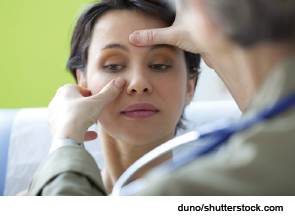
Rhinitis can arise as a side effect to a broad array of drugs.
Explore This Issue
November 2014A group of panelists discussed some of the potential causes of the condition, as well as new approaches to diagnosis and treatment.
Causes of nonallergic rhinitis can be immunologic, infectious, drug-induced, structural, hormonal, vasculitic, metabolic, and atrophic, among other categories, said panel moderator John Krouse, MD, PhD, chair of otolaryngology-head and neck surgery at Temple University School of Medicine in Philadelphia.
It’s traditionally been a diagnosis of exclusion. Patients present with sneezing, runny nose, postnasal drip, and nasal congestion promoted through several triggers, with lack of a skin test or in vitro demonstration of IgE-mediated allergic disease and no response to traditional treatments for allergic rhinitis.
Rhinitis can arise as a side effect to a broad array of drugs, from decongestants to antidepressants, from calcium channel blockers to aspirin, said Stephanie Joe, MD, associate professor of otolaryngology and director of The Nasal and Sinus Center at the University of Illinois at Chicago.
This cause of NAR is especially tricky to pinpoint, because the culprit medications are serving some kind of need, Dr. Joe said. “It’s difficult, because obviously you have to weigh the benefits and the risks and the side effects of taking these medications versus getting proper treatment and relief,” she said. “And that’s where the patient education plays into it very heavily.”
Patients can experience headaches when tapering off nasal decongestants such as Afrin, and panelists suggested allowing the patient to spray only one nostril per day—or even giving them saline to spray instead, to satisfy the urge.
Working Conditions
Nonallergic rhinitis brought about by working conditions, such as inhalation of chemicals or exposure to dust, can be difficult to assess because the mechanism might not be clear, said Elina Toskala, MD, PhD, professor of otolaryngology-head and neck surgery at Temple.
A group set up by the National Institutes of Health, the Non-Allergic Rhinitis Work Group, studied whether exposure to occupational agents can produce rhinitis symptoms by way of nonallergic mechanisms.
The group reviewed 27 articles and found that the literature on occupational nonallergic rhinitis is hindered by a lack of objective physiological testing and longitudinal follow-up, as well as by the potential for being confounded by simultaneous allergen exposure. But, they said, numerous studies support the idea that exposure to occupational agents can cause nasal symptoms in ways other than the allergic mechanism.